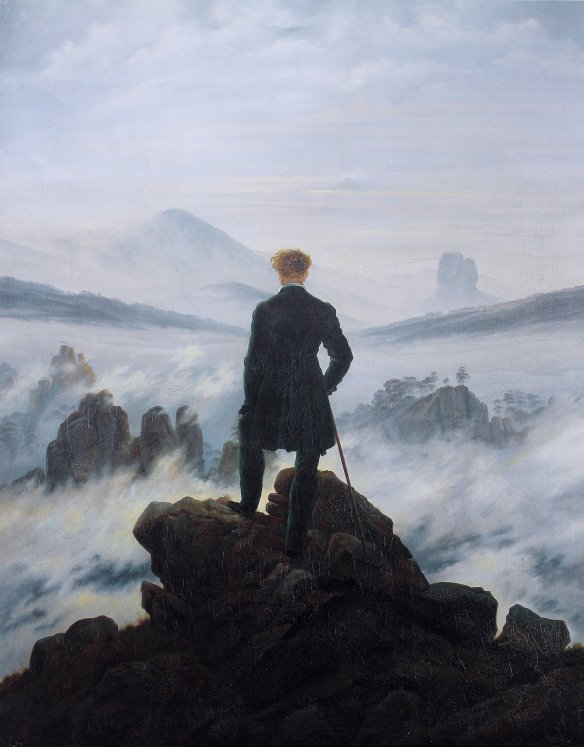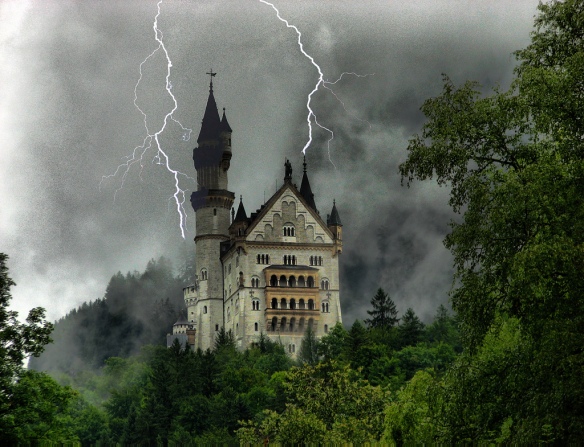Welcome back, boys and ghouls! The continual clouds and drizzle outside have informed me that, at long last, DC’s hot miserable humid nightmare of a summer has ended and we can finally move into the comparative comfort of our cooler but somehow equally sticky autumn. And with the changing of the seasons returns We Happy Few, emerging from our opposite hibernation to prepare for our upcoming season. Beginning in mid-October we will be presenting our first performance in repertory, as we conclude our first Classics-in-Action Cycle with the Horror Rep. We are remounting 2016’s A Midnight Dreary and last year’s Dracula and, just in time for the 200th anniversary, introducing our brand-spanking-new adaptation of Frankenstein! As you might imagine, since you’ve already read at least 6000 combined words about our adaptations of Poe and Dracula, and since I mentioned the whole anniversary thing, and also because of the title at the top of this blog post, I’m planning on spending some time today talking about Frankenstein. Specifically the literary origins and context of this, a cornerstone of Gothic fiction and arguably the foundation of both science fiction and horror [yr. humble narrator’s two favorite genres, in case I haven’t made that abundantly clear -KH], borne from deep within the English Romantic movement. Let’s get to it.
The grim weather of DC fall puts me in the mind of the legendary origins of Frankenstein. On a similarly grey and drizzly day while on vacation in Geneva in 1816, Romantic poet Percy Bysshe Shelley, his lover and wife-to-be Mary Wollstonecraft Godwin, their boyfriend and fellow Romantic writer Lord Byron, and his doctor John Polidori decided to entertain themselves by writing spooky stories when they couldn’t play outside. Percy wrote a largely forgotten ghost story, Polidori a moderately famous novella called The Vampyre, Byron doubtless wrote something tedious about himself, and Mary, unable to offer anything at the time, wracked her brain for a while before offering up the foundation for what would become Frankenstein. Contrary to popular (or, at least, my) belief, she did not write the story at one go on that very evening, as if in a trance or fugue state, but rather worked at it for months before it was finished and saw print. Mary Shelley’s own introduction to the second edition of the story describes her husband frequently asking as to her progress and encouraging her to expand the story from a mere fragment to the full-length masterpiece it would become. It should be unsurprising that a woman with the blood of revolutionary intellectuals Mary Wollstonecraft and William Godwin, and so frequently in the company of Romantic greats Percy Shelley and Byron, should produce such a remarkable and long-lasting story. But I’m getting ahead of myself. What was this “Romanticism” that Mary found herself surrounded by, and what influence could it have had on her writing?
Romanticism as an artistic/cultural movement varied somewhat from country to country (unsurprising for something so deeply connected to the rise of nationalism), but there are a handful of universal elements: a fondness for pastoralism, an affinity with nature, the idealization of the past and accompanying mistrust of progress, and increased trust in emotion and individuality at the expense of reason and parochialism. In America Romanticism tended to focus on the frontier and the vast swathes of unspoiled nature that could be found there. In Continental Europe, particularly in France and what is now Germany and Italy, it frequently took on a political flavor and often emphasized shared cultural traditions, especially language, and was instrumental in the consolidation of both of those nations as nations.

Wanderer Above the Sea of Fog, by Casper David Friedrich, 1818. I still maintain that this picture will tell you everything about Romanticism you need to know.
English Romanticism cannot be so easily keyholed, not least because I am more familiar with it and did extra research about it, in order to write this blog post. It did not have access to the Great Wide Open that inspired the Americans, nor their bright and youthful optimism. It also largely avoided the political and revolutionary timbre of the Continentals, presumably by the same mysterious force that quarantined the island from the bloody populist rebellions which swept across Europe in the 19th century. [Please refer to the author’s unpublished dramaturgy notes from Henry V and to Chapter 38 of the Napoleonic Faerie novel Jonathan Strange & Mr. Norrell for two contrasting theories on how these rebellions could have been avoided. -ed.] While German Romantics explored their own storied history, the English Romantics usually spent their energies on the Ancient Greeks and Romans, presumably because the Arthur legend had been claimed by more conservative, reactionary writers of prior generations. For every English poem where a poet spent his ink on tales of that legendary past (Percy Shelley’s Ozymandias and Prometheus Unbound, most of Byron) there was another who had concerned themselves with nature and meditation (Keats’ Ode to A Nightingale, Wordsworth’s Tintern Abbey). Percy and Mary Shelley were avowed and vehement atheists, while Blake wrote an entire book, The Marriage of Heaven and Hell, to interpret his faith through his Romantic beliefs.
But I’m not just here to talk about English Romanticism, I’m here to talk about Frankenstein. And despite its pedigree and the unique circumstances of its birth, Frankenstein is clearly NOT a true Romantic work in the way that Prometheus Unbound or Childe Harold’s Pilgrimage or Tintern Abbey are. It certainly contains some of the earmarks, though queerly twisted; note the story’s ambivalence towards the pursuit of knowledge, or Nature’s cruelly destructive majesty typified by the glacier, the lightning bolt, the Arctic. But it does not reflect Romantic beliefs so much as reference and question them. In this way it almost seems like a reaction to Romanticism, the dichotomy within both the Doctor and the Creature between their reason and their emotion mirroring, perhaps, Mary Shelley’s conflict with the movement. In any case, our story thematically hews closer to a Gothic aesthetic. Frankenstein’s aristocratic protagonist, the propensity by both him and the antagonist for melodramatic versifying, the suspiciously well-timed thunderstorms at dramatically convenient moments, the twinges of the supernatural, all aesthetically link the story more closely to the crumbling castles and tortured antiheroes of Gothic icons like Bram Stoker and Edgar Allan Poe than to the bucolic likes of Wordsworth and Keats. Which is convenient, because we are not presenting dramatizations of Romantic poems, but of Frankenstein, Dracula, and Poe.

Neuschwanstein Castle. Photo by Filippo Rome. This picture is, likewise, basically just Gothic literature in a nutshell
Some other time I will come back and tell you about the bona fides of Frankenstein’s connection to horror and science fiction, as I mentioned earlier. For now I hope that this high school-level recapitulation of Romantic literature and my vague assertions as to how it alternatively influenced and differs from our story piques your curiosity about our show. Tickets are on sale now for performances of Dracula, A Midnight Dreary, and Frankenstein! Come check it out!